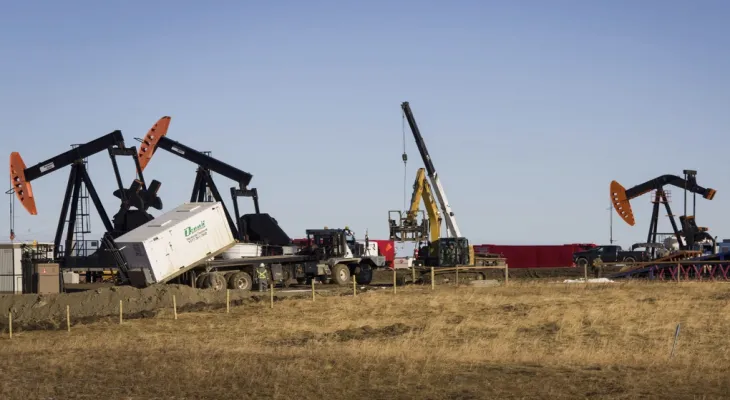Search here
Newspaper
Search here

Arab Canada News
News

Published: October 14, 2022
Canadian oil prices fell to their largest discount on futures since 2018, pressured by several factors, including the decline in Russian crude prices and the closure of several US refineries for maintenance.
Refineries work to convert crude oil into various petroleum products, such as gasoline, diesel, and jet fuel, according to the specialized energy platform.
The gap between the price of heavy Canadian oil and West Texas Intermediate crude widened by $1.50 to $32.50 per barrel in the town of Hardisty in Alberta province on Wednesday, October 12 (2022), the largest since November 2018, when the Alberta government imposed production limits on local oil companies, according to Bloomberg agency.
Reasons for the decline in Canadian oil prices
Over the past years, Alberta's oil sands producers have blamed the province's lack of pipeline infrastructure; forcing companies to sell at discounted local prices and offer significant discounts on heavy Canadian crude.
However, a new export pipeline called Enbridge Line 3, which began operation last year (2021), has solved much of this problem.
The line has a production capacity of 760,000 barrels per day, approximately 1100 miles long, and extends from Edmonton, Alberta, to refineries in the US Midwest.
The increasing discount in Canadian oil prices today is linked to a broader set of issues beyond Canada's control.
Maintenance operations and emergency closures of major US refineries in the Midwest, including the "Whiting" and "Toledo" refineries owned by British Petroleum (BP), have resulted in processing less Canadian crude in its biggest markets.
The Whiting refinery, owned by BP, suffered a fire in late August (2022), forcing the company to shut down some of its units; it is the largest refinery in the US Midwest, operating at a capacity of 435,000 barrels per day.
Another fire broke out at the Toledo refinery on September 21 (2022), causing severe burns to two people.
Most of Canada’s reserves are held in the vast oil sands north of Alberta, representing about two-thirds of the country’s production of 4.9 million barrels per day.
Rise in gas prices
At the same time, shipping disruptions on the Mississippi River raise concerns that refineries may have to reduce their operations; because the fuel they produce cannot be shipped via the river.
With declining demand in the Midwest, more oil is being shipped south towards the US Gulf Coast, where new problems emerge.
The rise in natural gas prices has increased the cost of refining heavy, high-sulfur crude oil, according to data from oil analytics company Fortex; meanwhile, Canadian crude is facing price declines due to Russian oil.
India has cut its imports of Canadian oil by nearly half since May (2022), as the country receives more Russian crude.
India — which rarely bought Russian crude — has become Moscow’s second-largest oil customer after China.
Canadian "Cold Lake" crude was traded on the Gulf Coast at a record discount, about $23 per barrel less than West Texas Intermediate crude, early on Wednesday, October 12 (2022), before the discount narrowed to $20.25 per barrel in the afternoon.
The discount on Canadian oil reached $25 per barrel in Cushing, Oklahoma, before bouncing back to $21.75 per barrel.
Canadian oil exports from the Gulf Coast recorded a record number in 2021 amid increasing global demand and the markets’ need for heavy crude.
The average exports of Canadian companies exceeded 180,000 barrels per day last year (2021), reaching around 300,000 barrels per day in December.
Comments